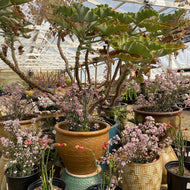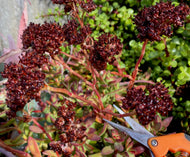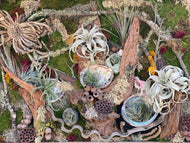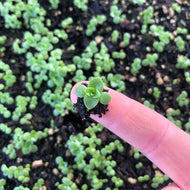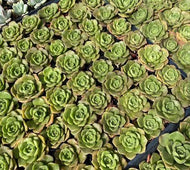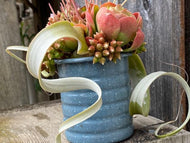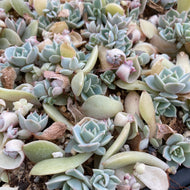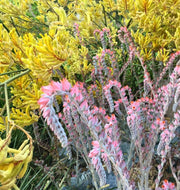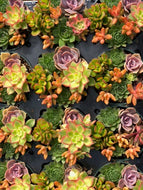Robin Stockwell, our founder/ King of Succulents and I, Creative Director/ Landscape Designer, led a tour of the Succulent Extravaganza Display Gardens for the Monterey Master Gardeners on Friday, April 10, 2015 to check in and give commentary on each garden’s progress.


Below: John Greenlee's meadow is still growing strong.

Certain hard-working Master Gardeners have been tracking garden progress monthly, and gathering useful data on growth, flowering, overwintering, and other observations throughout the 6+ months since these gardens have been installed. It was great to hear Robin’s take on the gardens and have a chance to ask questions!


Below: Covering ground with Hill and Dale Landscapes

Next we got down and dirty in a hands-on workshop on spring cleaning in the Succulent Garden. Weeds, dead flower-stalks and plants that did not make it through winter were the first to go. I like to attend to such easy decisions first, and then take another look at the overall landscape for what catches her eye next.
We explored pruning and deadheading techniques for certain plant categories, such as removing the flower stalk of an Echeveria when is is half-way done to conserve strength for the foliage rosette. We found that gardens such as Steve Sutherland’s Wave looked even better without the blooms distracting the eye from the patterned planting of Echeveria agavoides varieties.
Below: The Wave, pre-pruning

Certain types of echeveria grow up from their initial dense rosette, and if this ’trunk’ is not desired, we simply cut the rosette off! The remaining trunk will usually branch into multiple rosettes, and the original rosette can be left in the shade with good airflow until it forms ‘Air Roots.’ It can then be replanted as a lower, fuller specimen.

Echeveria blooms are long-lasting cut flowers. I like to put them in a vase with just pebbles or marbles in the bottom (no water). You can mix other dried flowers into the arrangement, and enjoy the delicate bell flowers from a different perspective than is possible in most garden settings. The dried flower pods often hold viable seeds that can be used to make more of these durable beauties!

